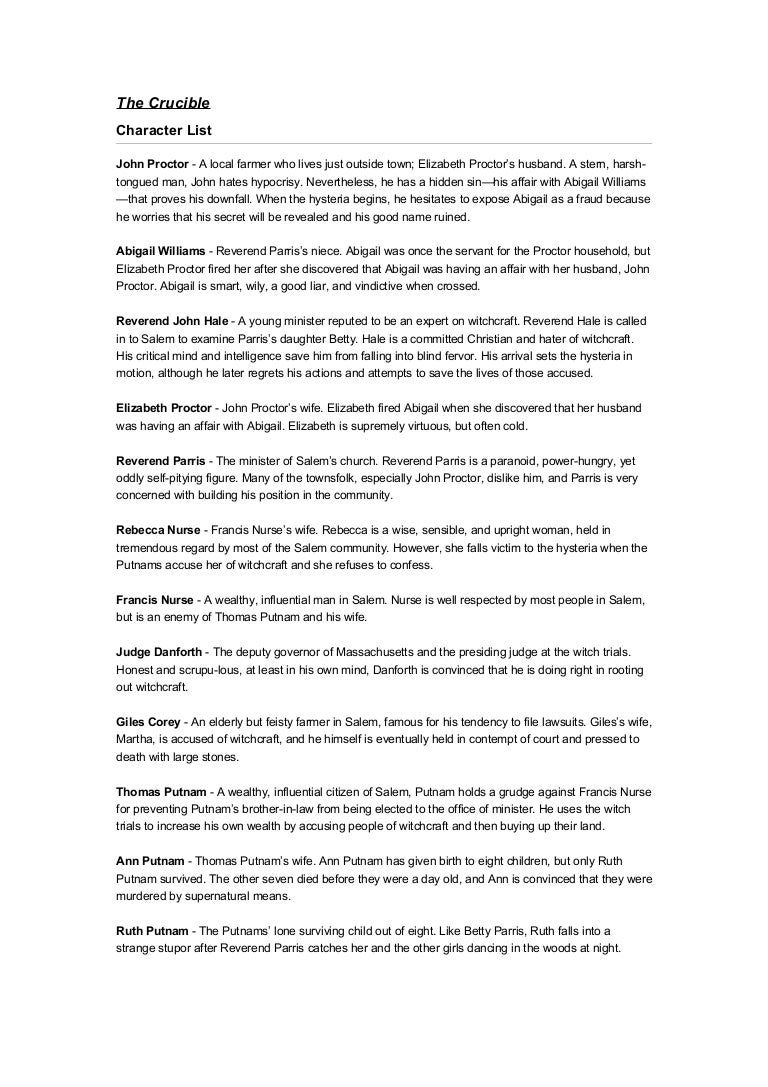

After days of poring over the documents, the language started to click for him. To pick up the nuances of 17 th-century speech, Miller went to Salem and read the trials' original testimony in the Essex County courthouse. … AND DID HIS BEST TO MIMIC THE ERA'S SPEECH PATTERNS. For example, the writer changed Abigail’s age to 17 years old instead of 11 years old, and imagined a doomed romance between her and John Proctor. “No character is in the play who did not take a similar role in Salem, 1692.” Miller did take some liberties, however. “ The Crucible is taken from history,” Miller wrote in The New York Times. In response, Miller was inspired to explore Salem’s literal witch as a means of describing the metaphorical one that was happening around him. He did, and Miller stopped talking to him. Elia Kazan-who directed Miller’s play Death of a Salesman-was called before the committee and asked to name people he knew to be Communists. Other people, like Charlie Chaplin, fled to Europe. Miller knew of two actors who committed suicide because of the investigation.

MILLER'S PALS WERE TARGETED, TOO.Īs McCarthyism progressed, a number of Miller’s friends and colleagues were scrutinized by the House Un-American Activities Committee. The next morning, he received an ominous telegram: "IT’S INTERESTING HOW THE MINUTE WE TRY TO MAKE THE SCRIPT PRO-AMERICAN YOU PULL OUT. Miller refused on the grounds that there were no Communist gangsters on the Brooklyn waterfront and withdrew the script. The head of Columbia Pictures, Harry Cohn, showed the script to the FBI-who, along with union head Roy Brewer-came back with ideas to make it more “American," namely by making the gangsters Communists. Hollywood was a willing participant in Senator Joseph McCarthy's efforts to crack down on alleged Soviet sympathizers, blacklisting artists who weren't cleared by the government. In 1950, Miller was in L.A., shopping around a script for The Hook, about union corruption on the Brooklyn waterfront. THE FBI WANTED ARTHUR MILLER TO CHANGE ONE OF HIS SCREENPLAYS. In his 1953 play The Crucible, Arthur Miller brings this shameful period of American history to life on stage, in an allegory for the witch hunt of his era: McCarthyism. Twenty people were killed, while many more died in prison. In 1692, around 150 people were arrested in Salem and imprisoned on suspicion of being a witch.


 0 kommentar(er)
0 kommentar(er)
